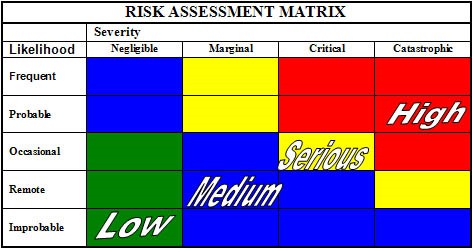President’s Corner
Reducing Risk and Relative Risk – Lessons Growing from Coronavirus
At the time of this writing, the onset of an epidemic of novel Coronavirus 2019 (nCoV) originating from Wuhan, China is gripping the world media. The healthcare and aviation industries play very key roles in the global attempt to prevent a pandemic. Aviation allows rapid travel around the world both of people and the diseases they may harbor. Global public health organizations seek to limit the spread and work with transportation industries to restrict travel and screen persons meeting high risk criteria. Quarantine, both of those in endemic areas and those traveling from areas or with symptoms, is a very serious measure implemented to contain the disease.
Several reputable sources have provided information to help reduce the risk of spreading the disease. The Centers for Disease Control and the World Health Organization have excellent sites that are updated with the most current information for travelers, aviation personnel, health care providers and the general public. The Air Line Pilots Association, International also has a comprehensive collection of references and resources designed for aircrew traveling internationally. Communications with accurate facts are essential in balancing media hype with actual facts. Much is not known for certain about nCoV, such as if it can be spread by surface contact, how long the virus can live on surfaces, the infectivity rate and other critical pieces to solving the crisis.
What is known is that nCoV can be spread from human to human through airborne respiratory droplets and that the fatality rate for those with known infections is about 2%. That number may be lower or higher as the true number of people infected is not known as many people are not allowed access to healthcare facilities for diagnosis. Based on previous coronaviruses and other pandemic responses, there are definite steps a person can take to reduce the risk of exposure and infection. The key preventive step is handwashing with warm soapy water for at least 20 seconds frequently during the day if faced with potential exposure. Avoiding persons with flu-like symptoms and coughs is ideal, but maintaining a 2-meter distance from those potential infected will reduce the risk. At this time, there is no evidence that wearing a paper/cloth mask will reduce the risk of acquiring the virus, but for those infected, wearing a mask can reduce the distribution of airborne viral particles. Coughing into a handkerchief or a sleeve rather than into hands also reduces the risk. In areas where the infection is widespread, avoiding crowded public gathering places is prudent. To date, there is no vaccine nor antiviral medication for nCoV.
More will become known quickly as there is a global effort of infectious disease and public health officials working around the clock to gather more data, conduct research and communicate policy recommendations to governments and the airline industry. The extraordinary steps being taken worldwide in the interim will slow the spread of the disease and hopefully lower the case mortality rate.
Speaking of mortality rates brings up the concept of relative risk, similar to a Safety Management System risk matrix. Some events are catastrophic and frequent. This is usually displayed in the red corner of a grid displaying risk. Other events are more common, but less serious and may be displayed in a yellow or blue band diagonally across the middle of the grid. Finally, there are events that may be relatively rare and low risk that are represented by green corner of the risk matrix.

Credit: faasafety.gov
Putting what is known about nCoV now and influenza in the US into the risk assessment matrix gives some perspective although the data on nCoV may change rapidly. The CDC reports in 2019, 35.5 million Americans got sick from the flu. Some may have had the flu but did not show significant symptoms. 490,600 Americans were hospitalized and 34,200 Americans died from the flu in that season, a milder season than previous ones. This would put the flu in at least the blue category, but for those with less than optimal health, the flu may be in the yellow or red category. Surprisingly, 43% of the US adult population did not get the flu vaccine despite a 1.4% risk of being hospitalized and a 0.1% of dying.
It is too early to predict accurately the mortality rate from nCoV or the ultimate number infected (incidence rate), but early numbers hover around 2% with 630+ worldwide deaths and 31,000+ known cases (7 February 2020). This would place nCoV currently in the right half of the matrix, but probably in the lower half. Similar to flu in the US in 2019, nCoV worldwide could be in the blue, yellow or red category depending on where one lives and travels. There are 12 reported cases and no deaths in the US. All had recent travel to China or close household contacts of infected people, putting the current US risk in the green or blue lower bar of the risk matrix.
Using this type of assessment, for Americans who have not traveled to endemic areas, the risk of infection is currently low. However, prudent precautions to prevent both nCoV and influenza are advisable.
- Wash hands frequently for at least 20 seconds with soap and warm water
- Avoid close contact with people with flu-like symptoms. Stay two meters or more away if possible
- Practice good cough/sneeze hygiene. Cover nose and mouth with a cloth or disposable tissue or use the sleeve of a shirt, not hands, to cough into
- Consider wiping down potentially contaminated surfaces with alcohol-based disinfectants (not a current recommendation)
- The use of a mask to cover the nose and mouth in not currently recommended to prevent exposure.
- Get a flu shot!
We all do preventive maintenance on our aircraft. Let’s do the same for ourselves.
Fly Safely, Stay Healthy!
Quay
